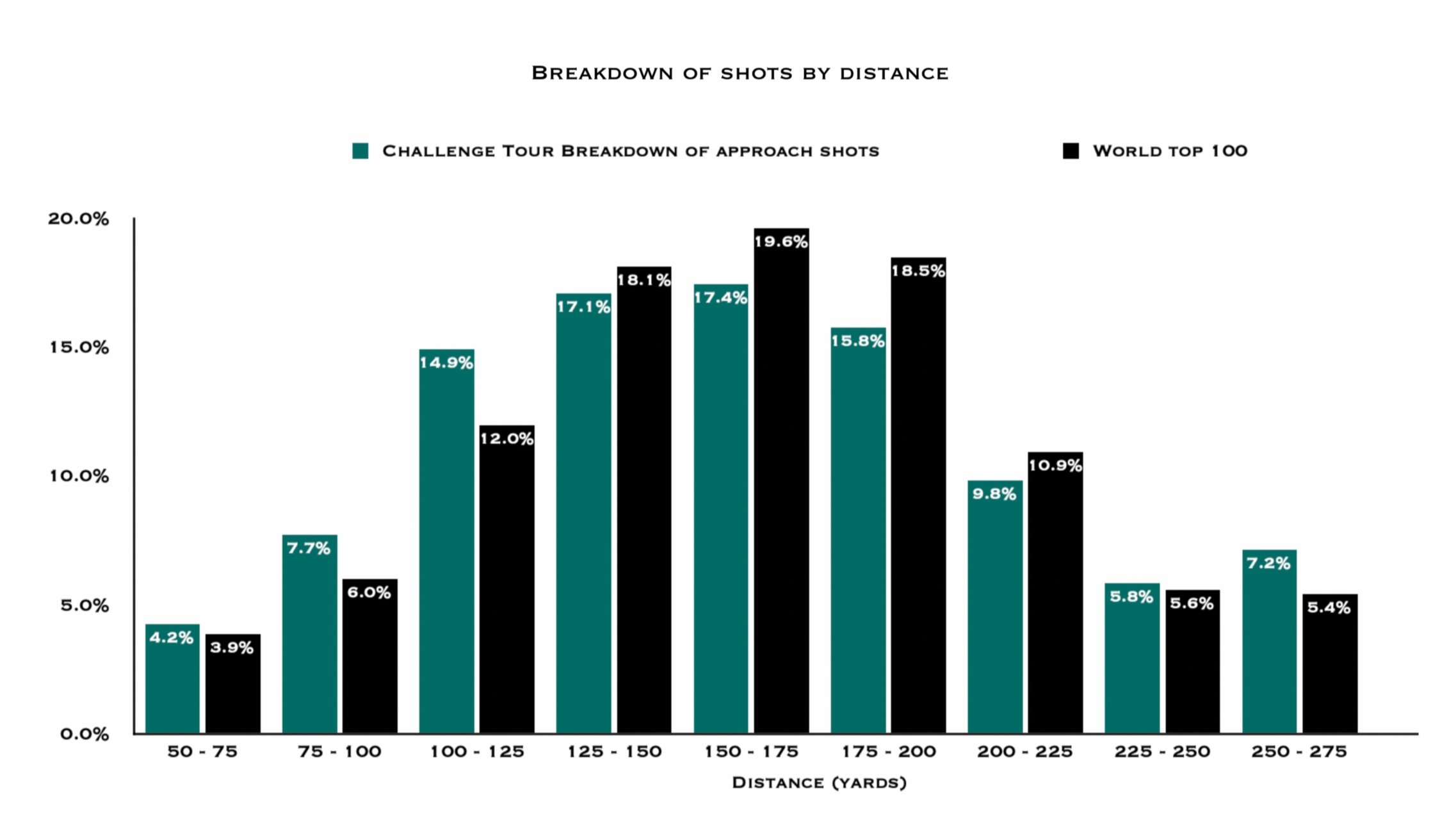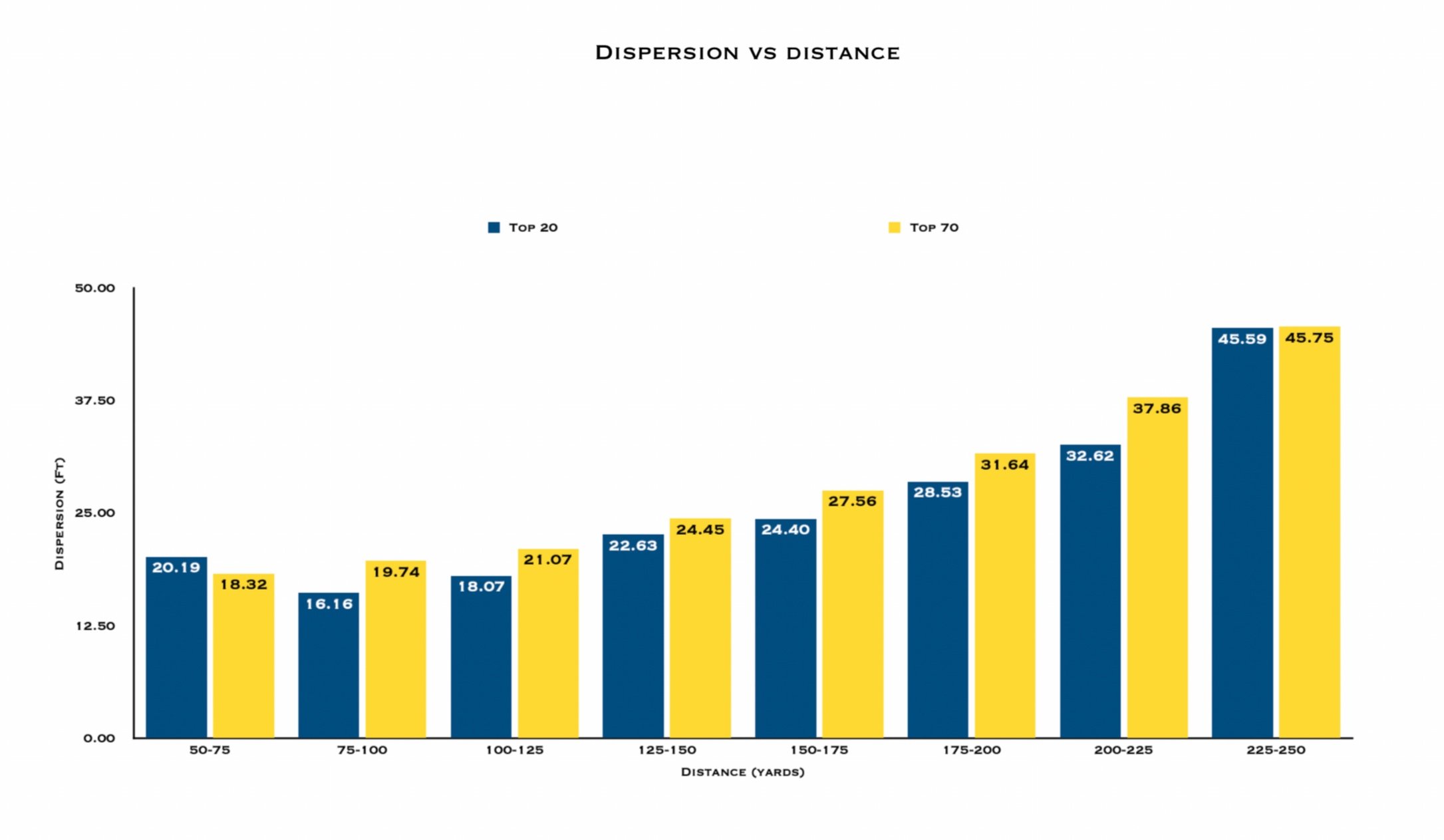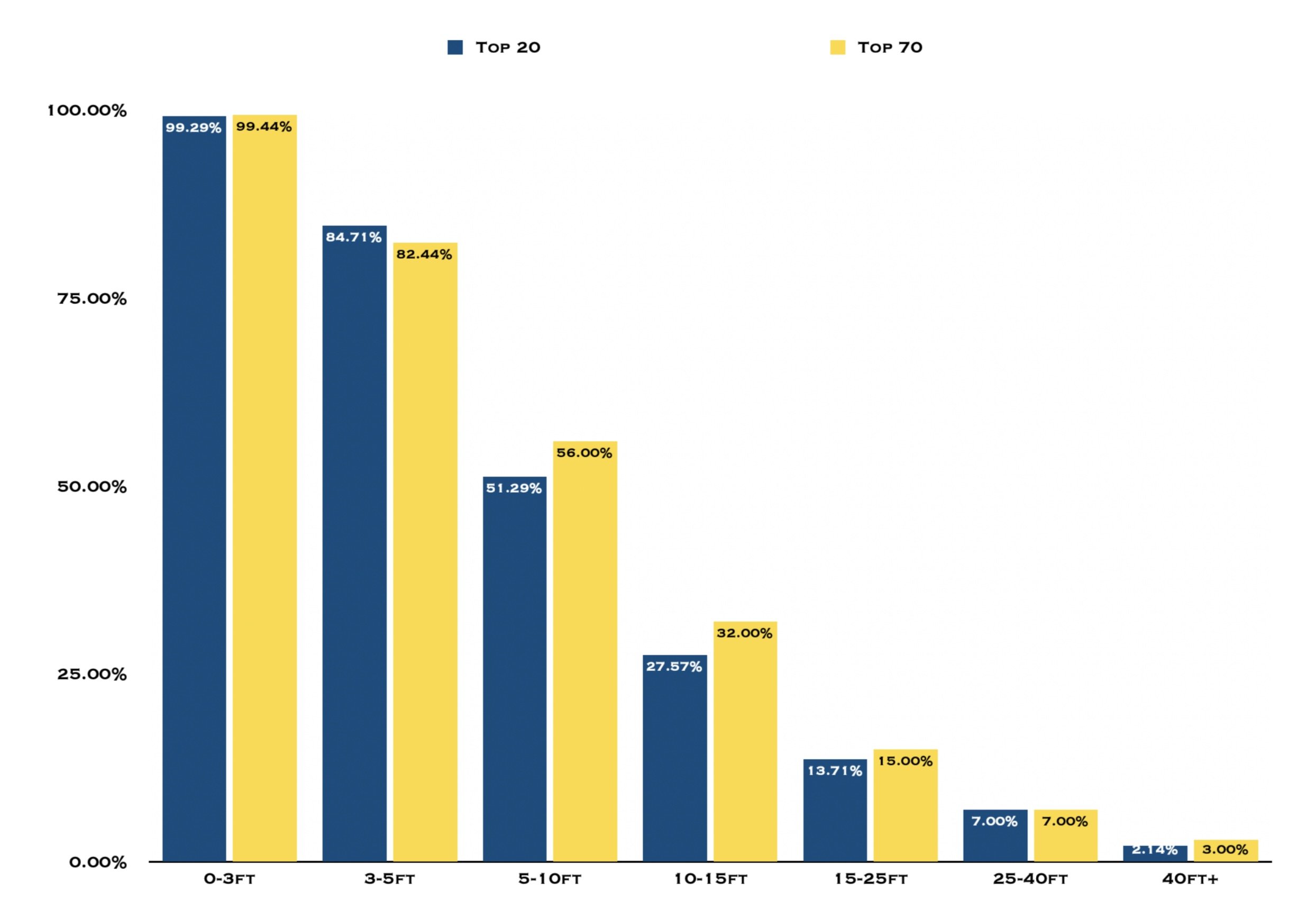From The Challenge Tour to The DP World Tour
0.67 shots per round. It may not sound a lot, but this was the difference between players finishing in the top 20 on The Challenge Tour and gaining promotion to the DP World Tour vs those finishing inside the top 70 and keeping their full playing rights for 2023.
At Upgame we were proud to have a number of Challenge Tour players using the Pro App this season, which included 9 wins, twenty five percent of the field at the grand final in November, and nine players in total gaining their full DP World status for 2023. This has allowed us to provide some insightful and unique data to show what it took to progress to the DP World Tour.
So what were the key differences between the top 20 vs top 70? The graph below gives us a really clear indication from a raw strokes gained (SG) perspective where the separation lies. It is important to note that the SG is not adjusted vs the field, nor vs the strength of field, but it shows a clear benchmark of what is required to gain promotion to the lucrative DP World Tour.
We can see the high performing players of 2022 excelled in driving and approach play, and gained on average 0.87 shots per round tee to green vs those who finished in the top 70. This was a result of averaging 8 yards longer off the tee combined with significantly lower dispersions in key approach ranges (see dispersion vs distance graph).
Around the greens there was virtually no difference, however interestingly this year the top 70 players were much stronger on the greens. Only one of our sample players in the top 20 had a positive strokes gained putting, with 5-15ft being the main separator between the two sets of players.
Be good at the shots you have a lot of.
So we know that tee to green performance was the largest separator on the Challenge Tour in 2022, but what areas do you need to target in these parts of the game to be able to turn an average year into a great year. A simple statement but one often overlooked and even a bit of an unknown for many players. This is also one of the key challenges both coaches and players need to navigate when making training plans for short, mid and long term goals.
In the Upgame Pro App we break down the number of shots a player has within each distance range. This allows the player to have a clear idea on where a large percentage of their approach shots are falling from. From here you can look to target improvements in those ranges to become ‘good at the shots you have a lot of.’ It’s great to be able to flush a 3 iron all day long but it won’t count for much on course that requires a lot of shots inside 150 yards. Similarly your wedge play might be great but you’ll struggle in a US Open if your driver and mid irons aren’t up to standard.
We are able to show what the key distance ranges were on the challenge tour this year and how leading players bettered their competitors in those key ranges.. The first graph below shows a breakdown of shots in each bracket, with 65% of approach shots coming between 100-200 yards, with 35% of those coming between 125-175 yards. So we know mid to short irons is a key area to target for players wanting to progress off the tour. Compare that to a selection of world top 100 players Upgame clients we can see that a much higher percentage of shots fall between 150-225 yards. So having the awareness of what is required for the level of tour the player is on combined with a long term plan to reach the very top of the game is important to continual progression.
The second graph highlights the marginal gains the top 20 made in these key areas to be able to separate themselves from those finishing in the the top 70. We can see that from in each ‘key distance range’ from 100-200 yards the top 20 player is better and as distance increases the separation becomes greater.
Miss better and gain more!
Within the Pro app we have unique end shot result metrics both off the tee and for approach shots. This is to overcome the flaws in traditional stats such as just simply fairways hit and greens in regulation but it also helps to put context to the type of misses a player may of had.
In approach play we break these end shot results down into, Green, Easy, Medium, Hard and then penalty shots. This allows the player to get a true interpretation of not only their approach play but also strategy and their short game.
When we look at the Challenge tour players as a whole from 2022 we can see the large effect different types of misses in approach play have on the ability to get up and down. From a hard position, dispersion is 4 times higher and losing on average 0.81 shots vs an easy miss.
The outlier for 2022
This one was a little surprising, especially when we looked at a similar set of data for the 2021 season where the top 20 players were noticeably stronger inside 15ft. However this season we saw that reversed, with only one top 20 player who finished the season with a positive SG in putting. The graph below shows players conversion rates and that the top 70 players were about 5% better in both the 5-10Ft and 10-15Ft ranges. Quite a separation in a key range!
Preparing for 2023....
Every player teeing it up during the early part of next season will have their own goals and aspirations of finishing inside the top 20 of the order of merit, and over the next couple of months the work behind the scenes will play a key role in how their seasons will play out. Preparation has always been key, but preparing correctly for what is required, both for their own game and the tour they are playing on, is something that can often be overlooked. Based on the above data collected from a number of players, there is a clear blueprint for success on the Challenge Tour that players can look to target their training towards.
• Being solid off the tee, with a low ‘Major miss %’, (unique to Upgame Pro).
• Quality approach play from 125-200Y with a low number of hard misses around the
greens.
• Good short game with a variety of shots. • Excellent holing out from inside 15ft.
Prepare well, perform better!
Upgame Golf






